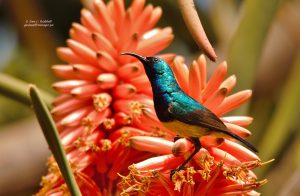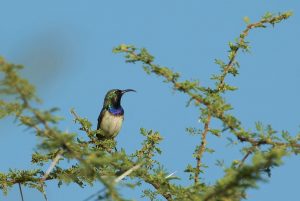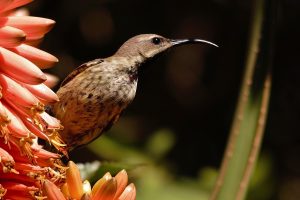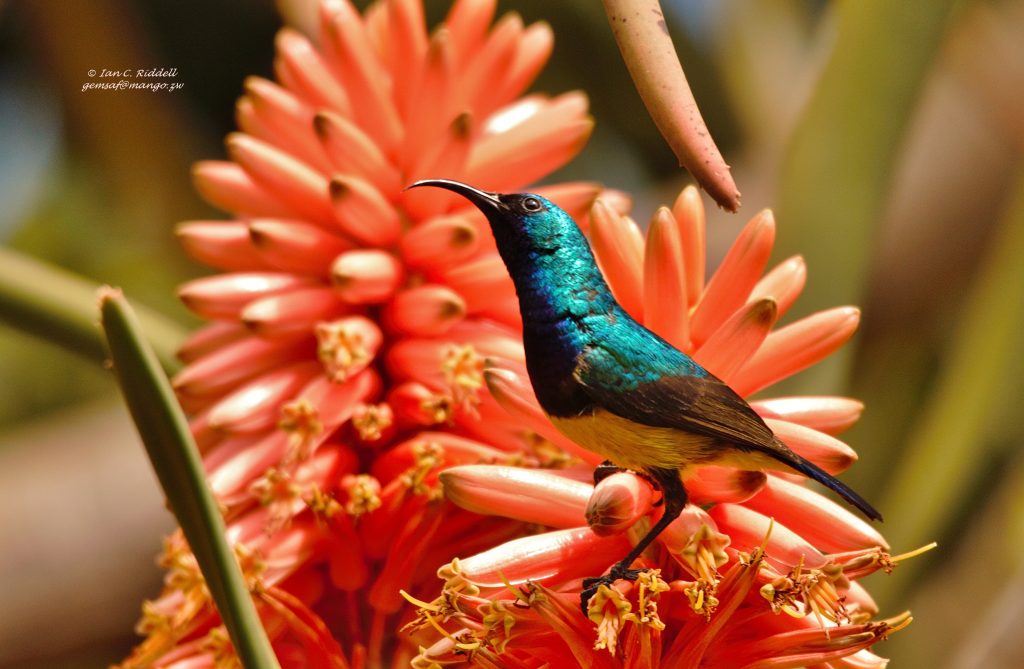By Ian Riddell, BirdLife Zimbabwe

Our familiar summer visitors have winged their way back to the northern hemisphere, where they are already well into raising new young for the return trip, leaving us with our resident birds for the winter months. But even though the birding is quieter now there is still plenty to do. You can even get up later and I find mid-morning is a productive time, no need for that crack-of-dawn stuff in June to August, the birds have more sense!

Winter is also ‘aloe time’ for us with those splendid, brightly-coloured orange to coral-pink to red, sometimes yellow, candle flames blazing brightly in the dry veld. Many species like to grow on or amongst rocks where there is some protection from fires; the granite kopjes and dwalas north of Harare are spattered with colour at the moment.
If you aren’t a hiker content with these occasional displays, now is the perfect time to head out to Ewanrigg Botanical Garden where you can enjoy the concentrated banks of colour on display and, of course, the many Sunbirds attracted to the flowers. The activity
out there is fairly frenetic with six to eight chattering species dashing about, making this the ideal one-stop Sunbird birding spot. Identifying females and young males can be difficult for the unpractised but you can simply stick to the males.

Variable, Eastern Miombo* and Amethyst Sunbirds are probably the most regular and are easy to identify as is Scarlet-chested. In our garden in Harare this is a visitor who spends most of his time defending our aloes from all-comers; I have told him he would save a lot of energy by simply tucking into that nectar but he clearly disagrees! The White-bellied is fairly easy to find at Ewanrigg but the less common are the Copper, Purple-banded and Western Violet-backed Sunbirds.
The Copper tends to be a bird of vleis and dams but does pop up now and again. A few months ago they were on the bottle-brush flowers in the picnic area closest to the dam. You can hold thumbs for the Purple-banded as it is probably the least common at Ewanrigg, but you never know.

The Western Violet-backed Sunbird is one that everyone wants to see and it is a difficult bird to find. Nonetheless, Ewanrigg is one of the most promising areas to try for this goodie, and you usually find them divorced from the aloes and on flowering trees or in the Miombo Woodland in the gardens. So far this year a pair has been seen a few times on Himalayan Variable sunbird, tree aloe Amethyst sunbird, tree aloe White-bellied sunbird, sango Cherry and other flowers. After winter, they used to be quite regular on the tall Kenya coffee shade tree, whose nectar is very attractive to birds, but this particular tree seems to have died back recently.
*Did you notice I called the Miombo Double-collared the Eastern Miombo? Yes, this central African Sunbird has been ‘split’ and occurs here, in eastern Zambia, Malawi and northern Mozambique. The Western Miombo occurs from Angola through to Tanzania, so two species out of one!

